Motorcycle Riding In The Rain And Wind - Motorcycle.com
Motorcycle Riding In The Rain And Wind
Wet roads and bad weather offer some challenges
Depending on your experience, skill, preparation and risk tolerance, riding a motorcycle in the rain can be anything from frightening to fun. In any case, it is at least more complicated, potentially more hazardous, and afterward, your bike will need a bath.
Some riders avoid rain, but others, especially in areas with more annual rainfall, learn to deal with it. And odds are if you ride long and far enough, sooner or later you’ll be confronted with it, willingly or not.
If you think you may have to ride in rain, it helps if you think of it as essentially learning a whole new subset of skills. Accepting it, and seeing it as a challenge, not necessarily a threat can also help.
And as alluded to, some riders actually like the rain. Nor are MotoGP races cancelled just because it’s raining either, which proves rain is not an automatic no-go if you learn to work with the demands made on you and your machine.
Allstate Insurance On Rider Safety |
| Our friends at Allstate Motorcycle Insurance know a thing or two about motorcycle safety. In addition to Motorcycle.com‘s safety series, Allstate Motorcycle Insurance has its own valuable safety information to share.* Motorcycle Awareness: Safety Tips from Allstate Motorcycle Insurance * Rider Safety: Staying Alert on Familiar Routes * Rider Training: Be Prepared and Carry These Essentials |
Covering up
If there is ever a time when most riders agree on the value of a full-face helmet, rain riding could be one. Raindrops sting at speed, and storm winds can blow larger things out of nowhere into your face.
Having suitable clothing is also vital. Many rain suits work well, especially for lighter rain. Heavy precipitation will test any suit however, and even some expensive designs can let water creep in if you let it.
Motorcyclist raingear has the extra job of fighting constant wind currents that want to flow in and around the suit. Any opening – collar, sleeve, or pant cuff – is an invitation for water to enter.
For example, even if you have a watertight coat and gauntlet gloves, air pressure can drive rainwater down the gauntlets and into your sleeves. Some riders find tucking in the gloves works better for their setup, and others do OK as long as their adjustments are tight. The same goes around the neck. A high protruding collar or neck warmer can channel water in.
If planning a long trip, you might want to test your gear on a rainy day close to home. Working out these issues can make the difference between actually getting along fine with rain, and cursing the day.
And if you do get wet, whether it’s warm or cooler will affect how you’ll like it. If heading toward rain, wearing a base layer that insulates when wet – like polyester, fleece or wool – may help. When uncomfortable, you are distracted, and more likely to make mistakes. But it is during inclement weather that all the more focus is needed, so think of preparation as a word to the wise.
Traction
Rainwater makes even clean pavement less grippy and simultaneously prevents your tires from warming up as quickly or as well.
What’s more, if it hasn’t rained lately, accumulated dirt and oils will form a slippery film until they are washed off. This could take a while depending on how hard the rain is falling.
And just as dry traction varies depending on the surface, so does wet. Some roads offer surprisingly good wet traction, and others surprisingly bad. It’s your job to figure out which is which and everything in between!
A way to test traction is to carefully and very briefly use the rear brake to the point of lock-up. This works in the dry too, and is a better-than-nothing gauge based on how easily your tire breaks loose. Do it on a flat part of the road – not on a crowned or cambered section, because the wheel will follow gravity and go out of line.
Hazard zones include repaired, or tarred pavement, old slick asphalt, some concrete surfaces, debris washed onto the roadway, and intersections rippled or soaked with oil. Toll booths and concrete parking garages that get wet, but never washed clean can also be sketchy. And watch out for railroad or trolley tracks, metal grates, expansion joints, and plates, which grip like Teflon. Rail tracks hit on an angle can steer your front wheel and instantly put you down. Likewise painted crosswalks and lines can be very slick when wet, offer poor traction for cornering or braking, and it’s best to run over them when you’re vertical as well.
Naturally, on wet roads lowered speeds, and careful movements are the watchwords. Keeping a relaxed body, and not a death grip on the bars also lets the bike do its thing. Progressively use the brakes. Take turns and accelerate smoothly. Going up a gear can help prevent spinning the rear wheel.
Hydroplaning is less likely for a motorcycle’s rounded tire than a car’s, but the wider the tire, or the faster you go, the more you increase your chances of it happening. The sipes, or cuts in the treads, also need to be deep enough.
Generally rain-oriented street tires have more sipes, and high performance street tires have fewer. Where sport tires may partially overcome this otherwise handicap is the quality of their compounds. Just as in the dry, softer rubber offers better traction than harder compounds.
Vision and Visibility
In lieu of wipers, Rain-X helps on the outside of the face shield, especially at speed. Some sort of anti-fog may help on the inside. At lower speeds fogging and rain buildup are more likely. Ratcheting the shield up a notch helps vent, and if you absolutely can’t see through the rain, raising it so you can see either through or under it may do the trick at low speed.
Eyewear with yellow or orange lenses may also help your visual acuity, especially for daytime rain riding.
If you have a fairing windshield, it should not be so high that you can’t peer over it. Think about trimming or replacing it if you can’t.
Hi-visibility colors and reflective bits are better than black or neutral colors without reflection. If you fell on the road, you would want to be easily identifiable as a human, not a piece of tarp or invisible.
Carve Out a Place
Try to maintain a safe following distance, and get away from drivers who want to tailgate. Sadly, many drivers who tend to follow too closely will not suddenly amend their ways in the rain. A trick that may or may not work is to look back for a moment, and put an open hand up to the tailgating driver. An alternate to this is to make a one-handed pushing motion. Other riders find waving their hand back and forth, while reaching behind, works. Some drivers may not realize they are risking a person’s life until you assertively but politely wake them up to this reality.
Thunderstorms
It is not advisable to ride if you are where lightning is striking. Riders have been killed or knocked unconscious while riding in lightning. The lucky ones wake up in a ditch. According to NASA, Florida has twice as many lightning-caused deaths and injuries than any other state. Other states with a high incidence of lightning strikes are Georgia, Tennessee, North Carolina, New York, Pennsylvania, Ohio, Michigan, Colorado and Texas. July is the peak month for lightning.
Wind
A motorcycle is like a little sail. Full fairings and lighter bikes are especially susceptible to side winds. Be prepared to have to lean into the crosswind just to stay upright. But if leaning into the breeze, also be ready to compensate if the crosswind abruptly stops. Alternately, some riders have been known to parallel cars or larger vehicles to let them block extreme crosswinds. Be careful not to ride in anyone’s blind spot though, if you try this.
Conclusion
A lot about how your rain riding experience goes is up to you. If, however, you are caught in a situation you feel is too much to handle, find the nearest safe spot to pull over. Otherwise, proactively teaching yourself to ride in the rain pushes back your fear threshold. Panic is the common denominator of all sorts of rider-induced crashes, so thinking about what you are doing, learning as you go, and not riding beyond the capacity of you or your machine is key.
More by Jeff Cobb




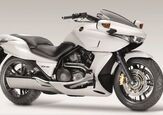
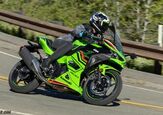
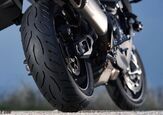

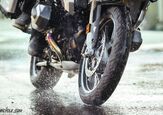
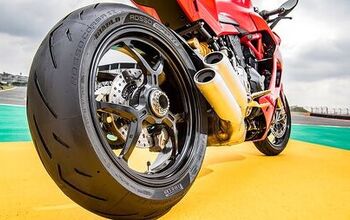
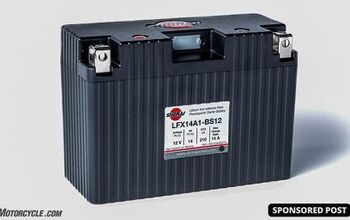
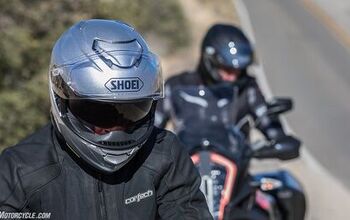
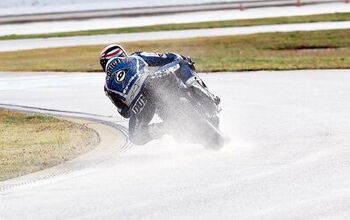
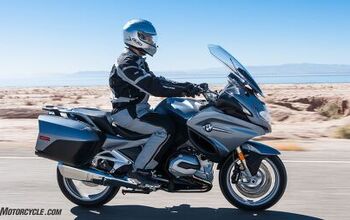


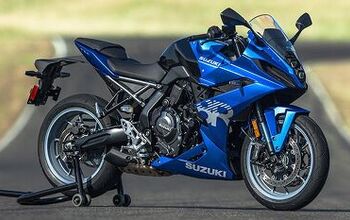


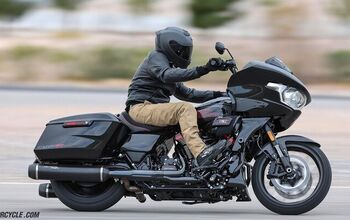
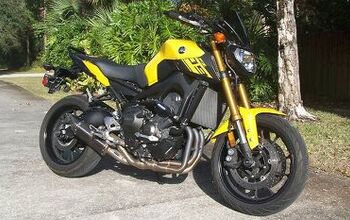
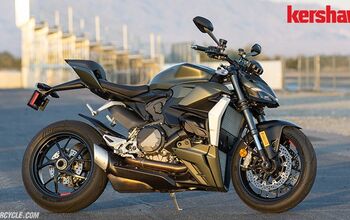
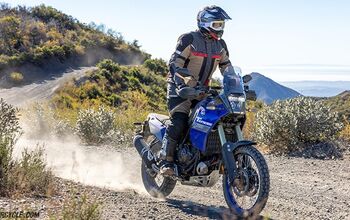
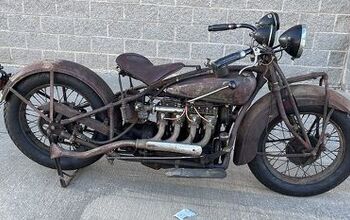
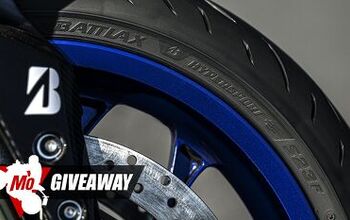

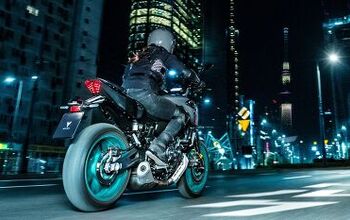
Comments
Join the conversation